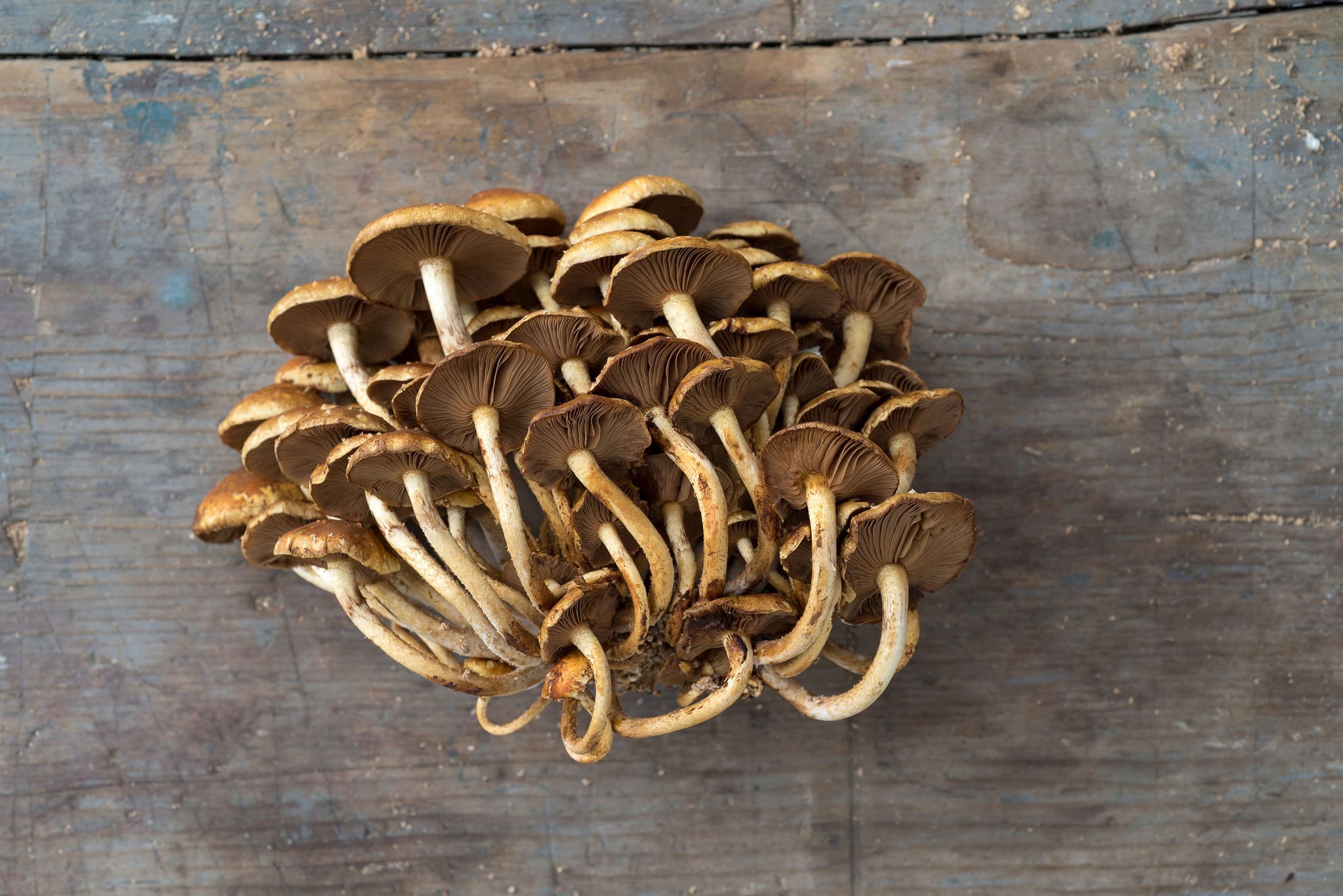
Our Research
HENOSIS proudly participates in several SARE (Sustainable Agriculture Research and Education) research projects. Learn more below!

Increasing Farm Fertility and Profits with Mushroom Mulches
Mulching of vegetable crops in the South provides an effective way to maintain soil and plant health by reducing soil-borne pathogens, weed pressure, and soil moisture loss while increasing organic matter over time. However, the cost of mulching decreases early season cash outlay, potentially lowering seasonal and overall farm profits due to the increase cost in materials and labor if yields aren’t increased. Farmers in the Southeastern U.S. need a way to offset the cost of mulching through either an increase in overall farm sales or a decrease in cost of straw and labor.
By incorporating mushrooms like Stropharia rugosoannulata and Hypsigus ulminarus into the mulch, farmers have the potential to further increase soil fertility and plant health while increasing revenue across the Southeast as both of these species can be grown in temperate and subtropic climates.
Mushroom mulches would also rapidly build soil because the enzymes the mushrooms exude for digestion would increase the decomposition rate of debris into organic matter, micro, and macro nutrients. This research project will provide tangible, Southeastern specific results as to whether and by how much mushroom mulch intercropping increases vegetable yields while bringing in new, diversified income to small farmers. This research is critical in providing data for Southeastern U.S. growing conditions, to determine potential vegetable yield increases, sustainability benefits, and potential additional revenue from mushroom crop. While the benefits of mulch are known, mushroom crops may be a way to reduce financial risk of mulch by increasing diversified revenue streams. Intercropping mushrooms with vegetables has some anecdotal evidence of providing these benefits.
Successional Mushroom Production: Farming Multiple Species of Mushrooms on One Substrate to Lower Input Cost, and Increase Revenue and Products Sold
Our solution to managing specialty mushroom waste is to create value added structure. Piles of half-decomposed sawdust blocks have enormous potential to become compost for secondary enterprises like on-farm soil fertility applications for plant production, substrate for mushroom production in the agaricus (button mushroom) genus and wholesale retail compost.
Consumer demand for specialty mushrooms like oysters and shiitake continues to grow in the US with 10% increase year over year. With growing cultural interest and high price point, these wood-loving organisms can provide our communities a way to digest agricultural and agroforestry waste in the form of soybean hulls and sawdust to produce high protein rich food. Furthermore, this mushroom growing technique is the primary way that nature decomposes lignin (wood fibre) for smaller microorganisms to digest further into compost. Compost and healthy soils are continually lost in conventional agricultural communities and urban development. Providing specialty mushroom farmers cost analysis on proper disposal and handling of this half-decomposed waste stream could be paramount to not only providing these farms with extra revenue but also for providing farming communities with rich compost, a much needed input to keep up with the fertility needs and also increase the biodiversity needs of our ecosystems. The compost at HENOSIS was analyzed by Cornell’s Waste Management and given excellent results with regard to micro and macro nutrients as well as our in-field trials using this compost in our vegetable and herb production plots which anecdotally resulted in robust yields. We believe this revenue could easily pay for the additional labor cost, even if done by hand. Furthermore this mushroom compost can then again be used for diversified farms’ vegetable/herb production to lower COGS or sold retail or wholesale to local nurseries.
Compost Analysis Cornell Waste Managment
Mushroom compost has it’s own economic value not only for plant production but as a means to grow secondary decomposer mushrooms in the agaricus family like button mushrooms and portobello. While these mushrooms are widely produced and consumed in the US and the barrier to entrance may be high for small farms to compete in this industry, looking at lesser known varieties like the agaricus sup. (Almond Portobello) as a secondary crop for specialty mushroom growers could provide another revenue stream for these farmers while minimizing cost of goods sold (COGS). This mushroom has been studied in the past by SARE by Sharondale Farm (FS08-227), though with outdoor production techniques rather than the indoor production techniques widely used in common button mushroom farms. Having assessed button mushroom production guidelines by Dr. David Meigs Beyer at PENN St. University and the quality of our in-house produced compost, it seems feasible that we would be able to use these resources and producion practices to produce a higher-valued mushroom, such as the almond portobello as pictured below from HENOSIS’ own outdoor preliminary trial.

